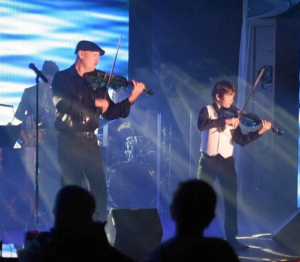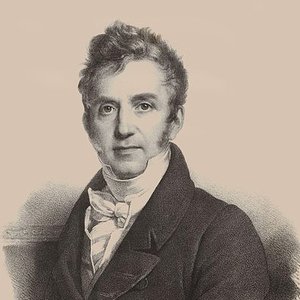Well, it has been a while since my last note to you. And by way of explanation I’ll say that I was pretty full up in LA last week doing recording sessions for John Williams – ‘Tin-Tin’ – and Aaron Zigman – ‘Sex and the City 2’.
One almost has to put John Williams in a class by himself, I must say. Not only are his scores always top-drawer, the man is just extremely skilled in all areas of the process; he conducts for himself, is very specific in his orchestrations, and writes extraordinarily well in many different styles of music.
Now, Paganini was no slouch either, as a composer. And perhaps his best writing may be found in his 24 Caprices, works he never even played in public to my knowledge.
And perhaps there was good reason for this.
You see, taken together these wonderful works are at once clues to his way of thinking about violin playing and tools for getting one conditioned to it. And during his lifetime he had a certain selfish interest in keeping these things to himself.
In any case, when I was young – I’m talking before my Milstein days – I really missed the ‘clues to his way of thinking’ part. In truth I just slammed through them believing the object was primarily velocity.
Naturally my results were mediocre during this phase. Most of the comments my performances generated were along the lines of. ‘boy, those sounds hard.’
But that is certainly NOT the response Paganini, or any great Paganini player, really wants to hear.
No, the real magic only begins to reveal itself when ones playing is informed by musical and technical understanding; something that came to me during and after working closely with Nathan Milstein for 3 years.
Naturally I have tried to communicate as much of this understanding as possible in my Paganini for Violin Virtuosity course, which I think every advanced violinist should have in his or her library.
But beyond that, however, the Caprices are valuable for another reason.
Paganini wrote that he believed one day the violin would be taught in a much more efficient way. Yet he never set down his thoughts of what this system would be like.
What I have sought to do, however, is to extrapolate backwards from his Caprices to the very beginning of the violin learning process. And by doing so to construct as direct a trail as possible from start to finish.
You see, many players will begin learning the violin with one set of ideas, and then have to make changes along the way to surmount the challenges these habits will not accommodate.
Needless to say, getting it right at the get-go saves a bundle of time over the several years the process requires.
And there’s the power of the visualization.
Today we all recognize the power contained in our imaginations where it comes to accelerating the learning of new skills. Actively visualizing what you are doing as you are doing it is an extremely effective tool, and it’s one I teach even as you put the bow to string for the first time in my Beginners Circle program.
So though I do not know for sure what Paganini would have put into his ‘Allegro Players’ program, or his “Kreutzer for Violin Mastery’ course, I do feel very confident you’d see a lot of familiar thoughts and ideas to what are in mine.
And with that I leave you to getting back to what you love best; enjoying the process of Violin Mastery.
All the best, Clayton Haslop
P.S. Oh yes, in case you are an intermediate player and do not have my Allegro Players program, here is where you can take a look at it.


